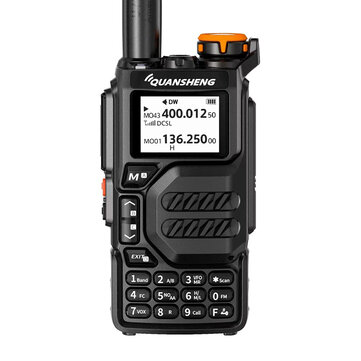
The Quansheng UV-K5 is a notable entry in the realm of amateur radios, known for its versatility, performance, and user-friendly features. As ham radio enthusiasts continue to seek devices that blend functionality with innovative technology, the UV-K5 stands out as a solid choice for both newcomers and seasoned operators. In this article, we will delve into its features, performance, and the unique aspect of its rewritable chip.
Overview of the Quansheng UV-K5
The Quansheng UV-K5 is a dual-band handheld transceiver capable of operating on both VHF and UHF bands. It supports a wide range of frequencies, typically from 136-174 MHz for VHF and 400-480 MHz for UHF. This versatility allows users to communicate across various amateur bands, making it a favored choice for both casual operators and serious hobbyists.
Key Features
Dual-Band Functionality: The ability to operate on both VHF and UHF bands is essential for ham radio operators. The UV-K5 allows for simultaneous operation on two different frequencies, enabling seamless communication in varied environments.
High Power Output: With power output options typically reaching up to 5 watts, the UV-K5 offers sufficient transmission power for clear communication over considerable distances. This capability is crucial for emergency communication and public service events.
User-Friendly Interface: The UV-K5 is designed with an intuitive user interface, featuring a clear LCD display that makes navigation simple. Programmable function keys allow users to customize their experience, making it easier to access frequently used settings.
Wide Frequency Range: In addition to amateur frequencies, the UV-K5 can also receive a variety of other frequencies, including NOAA weather channels and FM radio, adding to its utility as an all-in-one communication device.
Durability and Build Quality: Built with rugged materials, the UV-K5 is designed to withstand the rigors of outdoor use. This durability is particularly appealing to operators who frequently engage in field operations or emergency services.
The Rewritable Chip
One of the standout features of the Quansheng UV-K5 is its rewritable chip, which enhances the functionality and longevity of the device. This chip allows users to modify the firmware of the radio, enabling customization of various parameters and functionalities.
Benefits of the Rewritable Chip
Firmware Upgrades: Users can update the radio’s firmware to access new features or improvements. This means that the UV-K5 can evolve with advancements in technology, ensuring it remains relevant and capable over time.
Custom Programming: The rewritable chip allows for advanced programming options, including the ability to create personalized channel lists, frequency allocations, and modulation settings. This level of customization ensures that operators can tailor the radio to their specific needs.
Enhanced Features: As updates are released, operators can unlock new functionalities that may not have been available at the time of purchase. This might include improved scanning capabilities, better audio processing, or new digital modes.
Community and Support: With a community of users engaged in modifying and sharing firmware, operators can benefit from shared knowledge and resources. This collaboration fosters a supportive environment for troubleshooting and enhancement.
Performance in the Field
The Quansheng UV-K5 has garnered positive feedback from users regarding its performance. Many operators appreciate the clear audio quality and reliable transmission capabilities, which are vital for effective communication. The dual-band feature allows for quick switching between frequencies, making it ideal for both casual conversations and emergency operations.
Conclusion
The Quansheng UV-K5 ham radio is a remarkable device that balances performance, functionality, and user-friendly features. Its dual-band capabilities, high power output, and robust build quality make it a reliable choice for both casual users and serious ham radio operators. The inclusion of a rewritable chip sets it apart in the market, offering users the flexibility to customize their experience and adapt to technological advancements.
For anyone considering a versatile, durable, and highly customizable handheld transceiver, the Quansheng UV-K5 is certainly worth exploring. As the landscape of amateur radio continues to evolve, the UV-K5 stands as a testament to innovation in the field, proving that a handheld device can offer both practicality and a wealth of features for dedicated operators.






